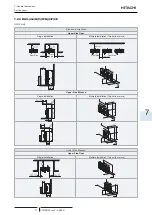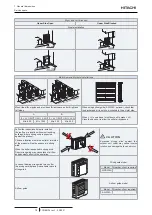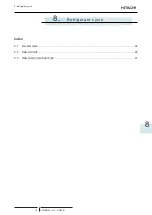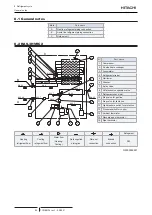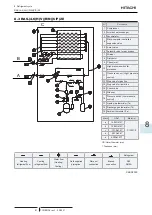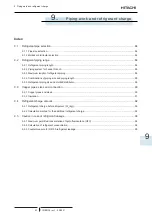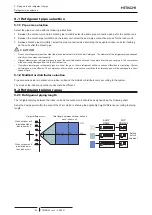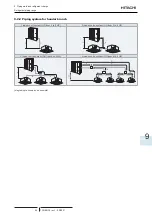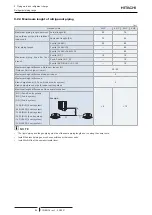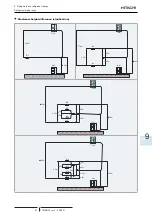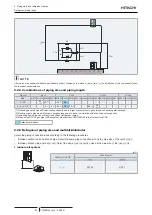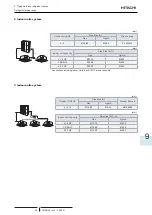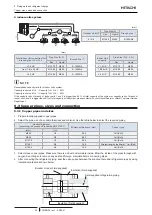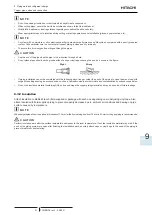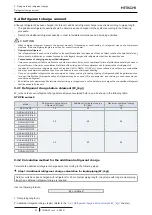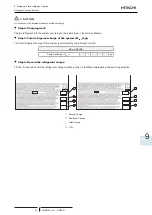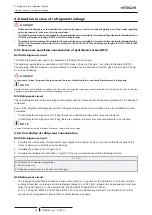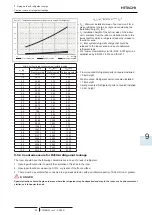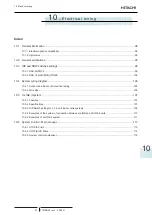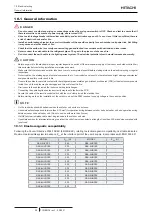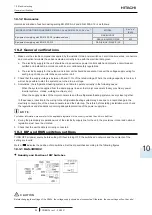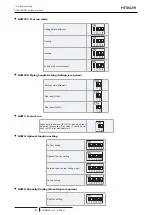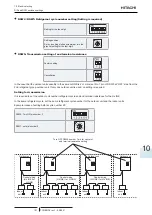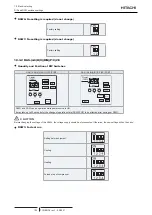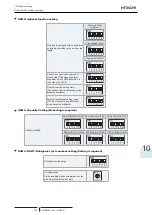
9 Piping work and refrigerant charge
Copper pipes, sizes and connection
TCGB0136 rev.1 - 05/2021
91
9
?
N O T E
• Do not use saws, grindstone or other tools which might create copper dust.
• When cutting pipes, secure the part to be soldered as shown in the Service Manual.
• Strictly follow national or local regulations regarding occupational health and safety.
• Wear appropriate means of protection during cutting or brazing operations and installation (gloves, eye protection, etc).
?
N O T E
• A system with no moisture or oil contamination will give maximum performance and life-cycle as compared with a poorly prepared
system. Take particular care to ensure that all copper piping is clean and dry internally.
• To ensure this, blow oxygen free nitrogen through the pipes.
!
C A U T I O N
• Cap the end of the pipe when the pipe is to be inserted through a hole.
• Do not place pipes directly on the ground without a cap or vinyl tape covering the end, as it shown in the figure.
Right
Wrong
• If piping installation cannot be completed until the following day or longer, solder the ends of the piping to close them and load with
oxygen-free nitrogen using an access device such as a Schrader valve to avoid moisture and contamination by extraneous particles.
• Do not use insulation material containing NH3 as it can damage the copper piping material and may be a source of future leakage.
9.3.2 Insulation
Attach insulation to Multikit branch (field-supplied or package with each one depending on model) using vinyl tape. Also
attach insulation to field-supplied piping to prevent capacity decrease due to ambient air conditions and dewing on pipe
surface caused by low pressure.
?
N O T E
When polyethylene foam is applied, a thickness of 10 mm for the liquid piping and from 15 mm to 20 mm for the gas piping is recommended.
!
C A U T I O N
Perform insulation work after the surface temperature decreases to the room temperature, If not, the insulation material may melt. If the
ends of the piping system are open after finishing the installation work, securely attach caps or vinyl bags to the ends of the piping to
prevent moisture or dust entering.

